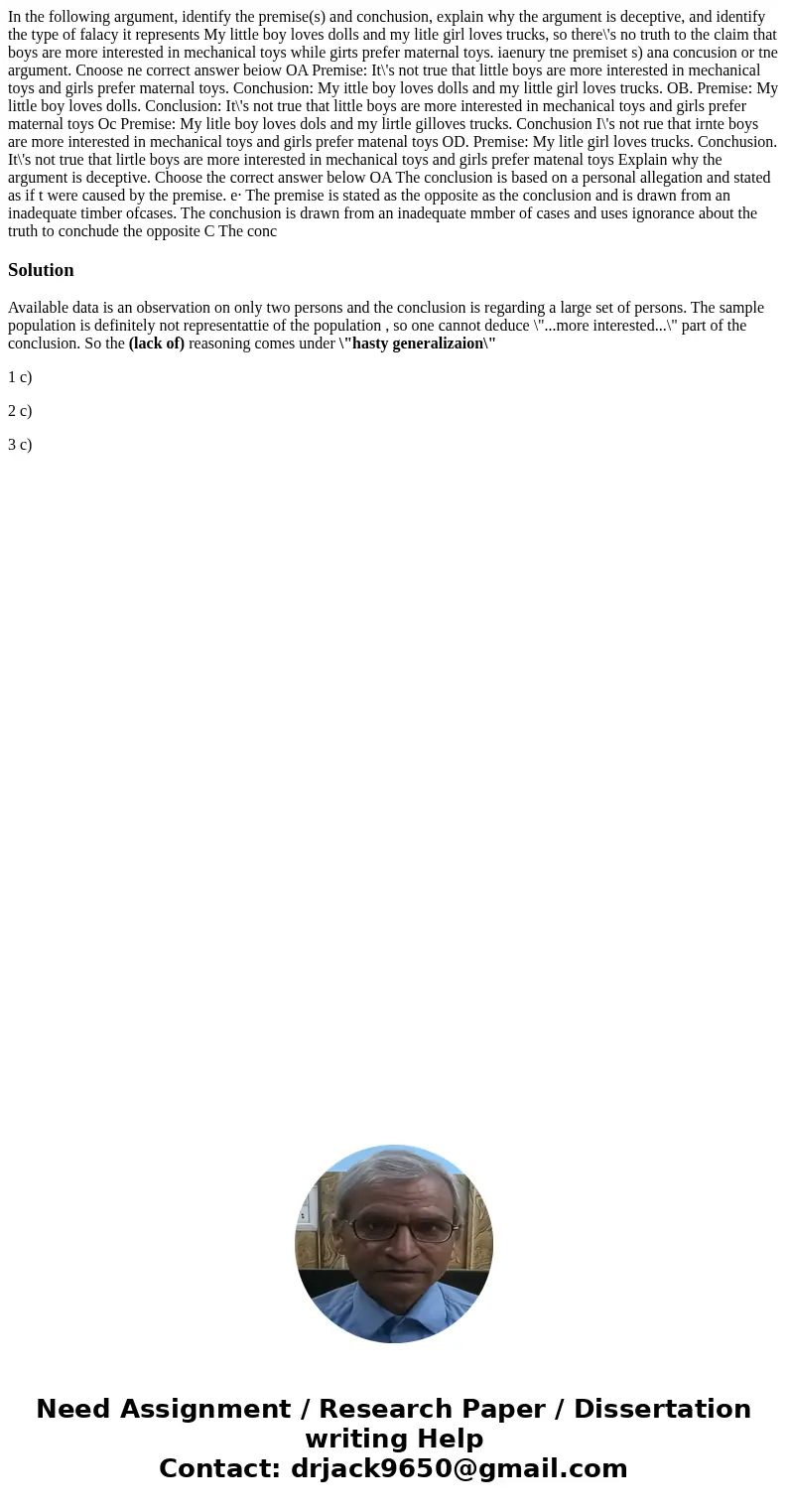In the following argument identify the premises and conchusi
In the following argument, identify the premise(s) and conchusion, explain why the argument is deceptive, and identify the type of falacy it represents My little boy loves dolls and my litle girl loves trucks, so there\'s no truth to the claim that boys are more interested in mechanical toys while girts prefer maternal toys. iaenury tne premiset s) ana concusion or tne argument. Cnoose ne correct answer beiow OA Premise: It\'s not true that little boys are more interested in mechanical toys and girls prefer maternal toys. Conchusion: My ittle boy loves dolls and my little girl loves trucks. OB. Premise: My little boy loves dolls. Conclusion: It\'s not true that little boys are more interested in mechanical toys and girls prefer maternal toys Oc Premise: My litle boy loves dols and my lirtle gilloves trucks. Conchusion I\'s not rue that irnte boys are more interested in mechanical toys and girls prefer matenal toys OD. Premise: My litle girl loves trucks. Conchusion. It\'s not true that lirtle boys are more interested in mechanical toys and girls prefer matenal toys Explain why the argument is deceptive. Choose the correct answer below OA The conclusion is based on a personal allegation and stated as if t were caused by the premise. e· The premise is stated as the opposite as the conclusion and is drawn from an inadequate timber ofcases. The conchusion is drawn from an inadequate mmber of cases and uses ignorance about the truth to conchude the opposite C The conc 
Solution
Available data is an observation on only two persons and the conclusion is regarding a large set of persons. The sample population is definitely not representattie of the population , so one cannot deduce \"...more interested...\" part of the conclusion. So the (lack of) reasoning comes under \"hasty generalizaion\"
1 c)
2 c)
3 c)

 Homework Sourse
Homework Sourse